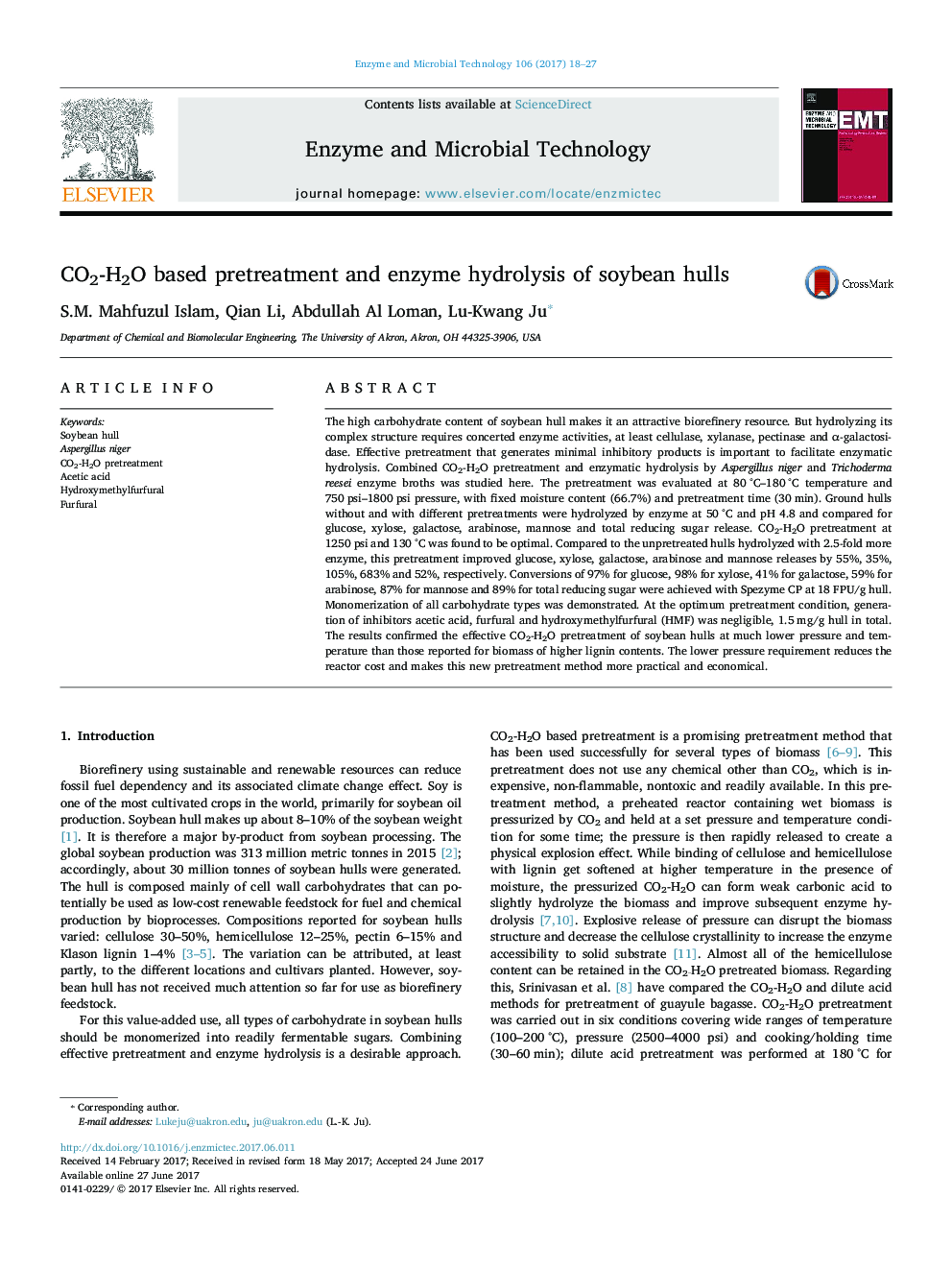| Article ID | Journal | Published Year | Pages | File Type |
|---|---|---|---|---|
| 4752715 | Enzyme and Microbial Technology | 2017 | 10 Pages |
Abstract
The high carbohydrate content of soybean hull makes it an attractive biorefinery resource. But hydrolyzing its complex structure requires concerted enzyme activities, at least cellulase, xylanase, pectinase and α-galactosidase. Effective pretreatment that generates minimal inhibitory products is important to facilitate enzymatic hydrolysis. Combined CO2-H2O pretreatment and enzymatic hydrolysis by Aspergillus niger and Trichoderma reesei enzyme broths was studied here. The pretreatment was evaluated at 80 °C-180 °C temperature and 750 psi-1800 psi pressure, with fixed moisture content (66.7%) and pretreatment time (30 min). Ground hulls without and with different pretreatments were hydrolyzed by enzyme at 50 °C and pH 4.8 and compared for glucose, xylose, galactose, arabinose, mannose and total reducing sugar release. CO2-H2O pretreatment at 1250 psi and 130 °C was found to be optimal. Compared to the unpretreated hulls hydrolyzed with 2.5-fold more enzyme, this pretreatment improved glucose, xylose, galactose, arabinose and mannose releases by 55%, 35%, 105%, 683% and 52%, respectively. Conversions of 97% for glucose, 98% for xylose, 41% for galactose, 59% for arabinose, 87% for mannose and 89% for total reducing sugar were achieved with Spezyme CP at 18 FPU/g hull. Monomerization of all carbohydrate types was demonstrated. At the optimum pretreatment condition, generation of inhibitors acetic acid, furfural and hydroxymethylfurfural (HMF) was negligible, 1.5 mg/g hull in total. The results confirmed the effective CO2-H2O pretreatment of soybean hulls at much lower pressure and temperature than those reported for biomass of higher lignin contents. The lower pressure requirement reduces the reactor cost and makes this new pretreatment method more practical and economical.
Related Topics
Physical Sciences and Engineering
Chemical Engineering
Bioengineering
Authors
S.M. Mahfuzul Islam, Qian Li, Abdullah Al Loman, Lu-Kwang Ju,
